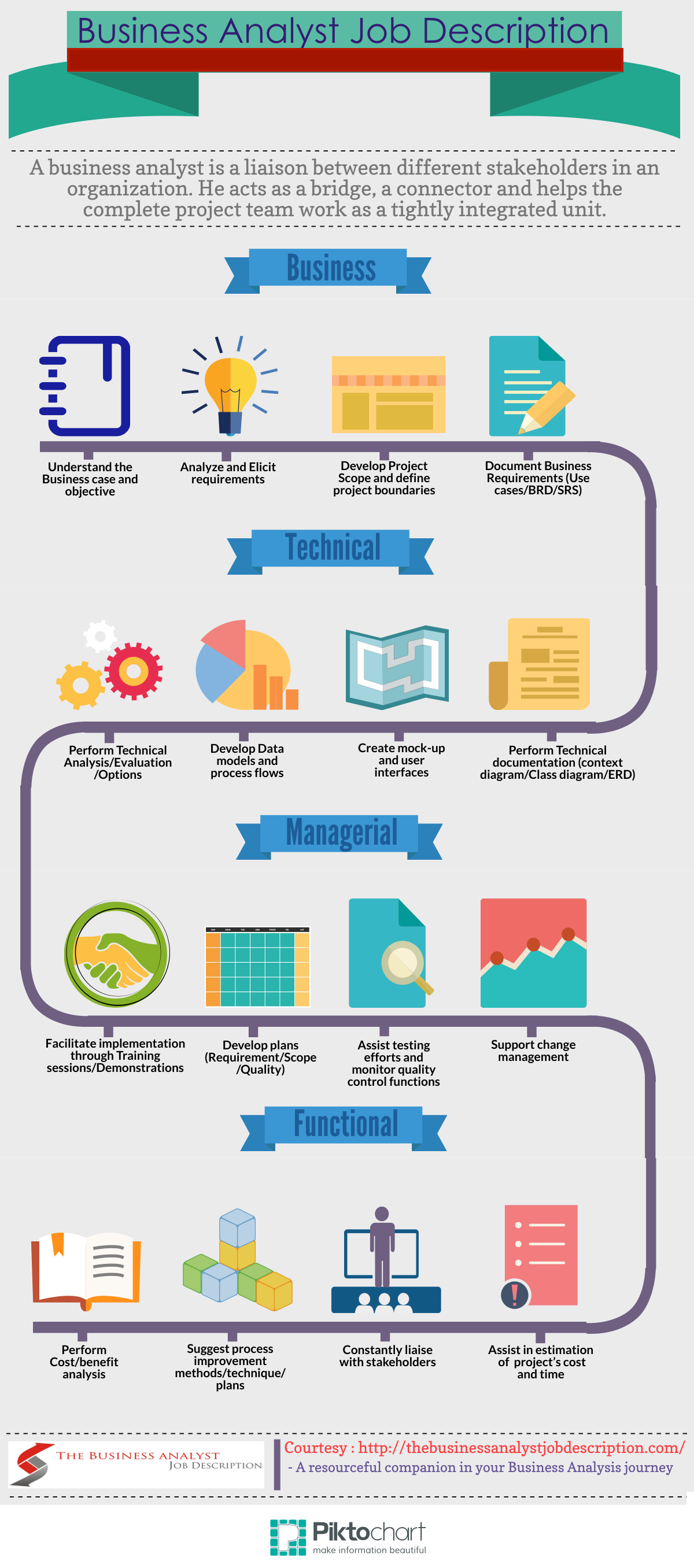Business Analyst Job Description: Verticals In Which A Business Analyst Works
/A business analyst’s profession requires him to systematically collaborate with both internal and external stakeholders, elicit information, decompose information into details and help the organization achieve its strategic goals.
In a nutshell, a business analyst is expected to methodically juggle multiple activities and refine his analysis skills simultaneously.
To help you understand more about the spheres into which the job of a business analyst can expand, I have divided them along the following verticals and also explained the typical responsibilities to be carried out in each vertical.
Business
In this vertical, the BA is expected to:
- Thoroughly understand the objectives of the business, uncover assumptions and identify other associated constraints associated with developing a business case.
- Elicit requirements through interviews, brainstorming sessions and evaluate them for correctness. Additionally, abstract statements are broken down into legible and achievable requirements.
- Support scope definition by defining what is within and what is out of consideration or implementation.
- Succinctly document requirements using use cases, business requirements documentation (BRD), functional requirement specification (FRS) documents, etc.
Technical
In this vertical, the BA is expected to:
- Perform technical analysis by scrutinizing technical dependencies and uncovering any technical challenges that may pose a risk to the success of the project.
- Develop data models by creating Entity Relationship Diagrams (ERDs), Data Flow Diagrams (DFDs), Data Mapping Specifications or Data Matrices.
- Create product prototypes and model requirements in the form of graphical user interfaces.
- Document requirements from a technical standpoint by creating context diagrams, class diagrams and activity diagrams.
Managerial
In this vertical, the BA is expected to:
- Facilitate the implementation of products by liaising with the entire project team, facilitating knowledge transfer sessions and bridging understanding gaps.
- Develop comprehensive plans like the Business Analysis plan, Test plan and other ad-hoc plans, as might be required from time to time.
- Assist with testing efforts by performing functional testing of the software/product, assisting in the creation/review of test cases and facilitating User Acceptance Tests (UAT).
- Support change management by understanding the depth of changes, validating their relevance with respect to business objectives and guiding the business to eliminate unnecessary changes.
Functional
In this vertical, the BA is expected to:
- Perform cost benefit analysis of any proposed project by assessing the amount to be spent on the project versus the benefit expected to be attained from it.
- Suggest process improvement methods for efficient and effective organization-wide policies.
- Constantly liaise with stakeholders through presentations, meetings and verbal/written communication.
- Help estimate project cost and time by assisting in function point estimation, critical path analysis and earned value techniques.
We have clearly seen that the job of a business analyst also involves reflecting on current applications and processes, evaluating solutions to streamline business activities and contributing to the achievement of the organization’s vital objectives.
Author Bio:
Robin is a PMP certified Project Manager with a profound inclination towards Business Analysis. In his spare time, you can find him sharing his knowledge on his Business analysis blog. You can reach out to him at robin@thebusinessanalystjobdescription.com
Picture Attribution: “Snowy Direction Board” by digitalart/Freedigitalphotos.net

